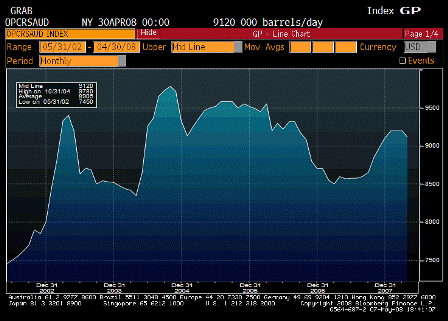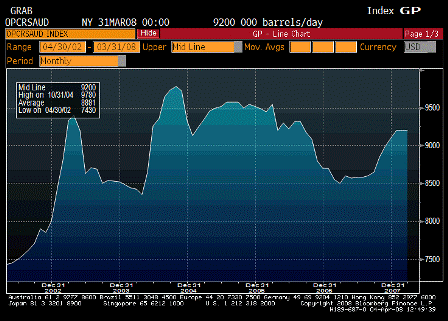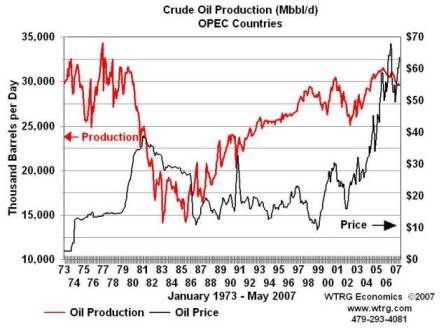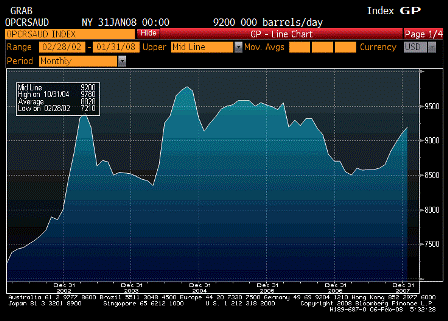I’ve been thinking that when the Fed turns its attention to inflation it will find itself way behind that curve, which it is by any mainstream standard, and that the curve then gets negative from a year or two out as markets anticipate rate hikes followed by falling inflation and rate cuts.
Didn’t know exactly how it would get from here to there, how long it would take or exactly when it would happen.
I never thought the Fed would let it go this far. Especially Governor Kohn, who has been through this before in the 1970s with Burns, Miller, and Volcker. This FOMCs inflation tolerance lasted a lot longer than I expected, even with a weak economy and perceived systemic risk.
Won’t be long before the mainstream comes down hard on this FOMC for letting the inflation cat out of the bag with a high risk, untested, counter theory strategy of aggressively cutting into a triple negative supply shock. The mainstream will see it as a ‘hail Mary’ move. If it works, fine, if not it was a foolish error with a major price to pay to fix it.
Maybe they just got what will turn out to be overconfident in their inflation fighting ability. Kind of a ‘we know how to do that and can do it anytime’ attitude.
Wrong. They will soon find out it is not so easy.
Maybe they got confused and saw the tail risk as that of the gold standard era when there were real supply side constraints to money to deal with.
Also, they probably blamed the whole 1970’s thing on labor unions; so, maybe they got blind sided this time because they thought without unions wages would be ‘well contained’ and therefore there would be no inflation.
Wrong on that score as well. It was about oil before, and it is about oil now.
And the fact is, they have no tools for fighting inflation. They think they do (hiking rates), but higher rates just make it worse by raising costs and jacking up rentier incomes. (Incomes of savers who do not work or produce = more demand and no supply)
The inflation broke in the early 80’s only because of a supply response of about 15 million barrels of crude per day that buried OPEC and caused prices to collapse for almost 20 years. (And even during the 20 years of low oil prices and falling imported prices inflation still averaged around 3%.)
That kind of supply response is not going to happen in the near future. I expect the Saudis to keep hiking and inflation to keep getting worse no matter what the Fed does. It is payback time for them from being humiliated in the 1980s, and they are also at ideological war with us whether we know it or not.
Markets might have a false start or two with the interest rate response and flattening curve, just to not make it too easy.
Also, as before, there could be an equity pullback when it is sensed the Fed is going to seriously fight inflation with hikes designed to keep a sufficient output gap to bring inflation increases down.
And along the way everything goes up, including housing prices, during a major cost push inflation. Even with low demand. Just look at all the weak emerging market nations that have had major inflations with weak demand, high rates, etc. etc.




